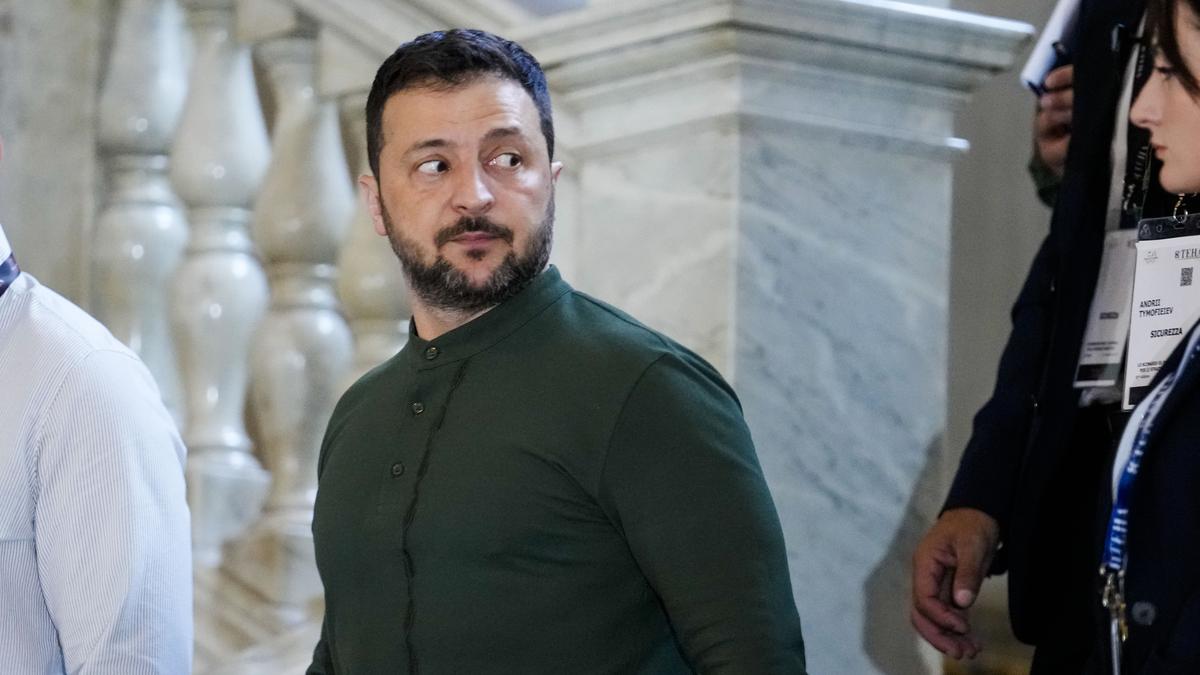
Ukrainian President Volodymyr Zelensky. | Photo credit: AP
(This article is part of the View from India newsletter compiled by The Hindu’s foreign affairs experts. To get the newsletter in your inbox every Monday, Subscribe here,
last year’s most awaited Counter-attacks Ukraine was attacked in the east and had no success in the south. Earlier this year, the Russians launched their attacks in several directions in northeastern and eastern Ukraine, making gradual progress. In July, when Ukraine was under heavy pressure on the battlefield, the country’s top military commander, General Oleksandr Sirsky, called a secret meeting of his top officials to unveil an ambitious plan. At the meeting, according to a report The Wall Street JournalGeneral Sirsky told his officers that Ukraine would take the war directly to Russia. If in the spring of 2023 Ukraine tried (and failed) to cut off some of the strongest Russian defensive lines on the frontline, this time General Sirsky’s plan was to attack the vulnerable underbelly of the Russian bear – attacking the less defended Kursk region. Ukrainian troops crossed the border on 6 August and launched a surprise attack, the first major land invasion of the Russian mainland since the end of World War II. In the weeks that followed, Ukrainian troops seized hundreds of square kilometres of Russian territory, dealing a blow to President Vladimir Putin’s image. President of Ukraine Volodymyr ZelenskyHis forces will continue to hold the territory they have captured for the foreseeable future.
The offensive was a morale booster for Ukrainian troops, who were badly beaten on the front lines and suffered continuous setbacks. The areas captured by Ukrainian troops also provide a buffer zone for Kiev between Russia and its border areas. And, if the troops manage to capture the region, it is an additional bargaining chip for Ukraine’s leadership in future negotiations with Russia – whenever that happens. But Ukraine had a more pressing objective – to divert Russia’s attention from its campaign in Donetsk, where its troops were steadily advancing east towards the strategically important city of Pokrovsk. Ukraine wanted to force Russia to transfer some of its troops to the Kursk defense and weaken the Pokrovsk offensive.
Russia did indeed strengthen its defense in Kursk, halting Ukraine’s advance in the area. But Russia has also doubled down on its offensive in Donetsk. On the other hand, Ukraine’s decision to send some of its well-trained troops to Kursk further weakened its already weak defense in the east. As a result, Russia has Lightning is heading to Pokrovsk in August, marching across open land and encircling towns with villages and small settlements. According to British intelligence, Russian troops are now within 10km of Pokrovsk. Russian and Ukrainian military bloggers as well as open source-based battlefield maps confirm Russian claims of battlefield advances in the east.
Mr Zelensky acknowledged last week that the situation in the east was difficult. Russia has also stepped up missile and drone attacks in Ukraine. In one such attack, on September 3, Russian missiles hit a Ukrainian military training institute, killing, At least 55 people were killed, according to the official account.If Russia captures Pokrovsk, a vital supply hub along roads and rail lines, Ukraine’s defenses in its east will come under even more pressure, and, many analysts say, the Russians, who already control 80% of the Donbass region (including Donetsk and Luhansk), could move toward Kramatorsk and Sloviansk. This calls into question the strategic thinking behind the Kursk offensive.
The incursion into Kursk shows that Ukrainian troops still have the ability to launch surprise attacks during a war. But if the main aim of the attack was to slow Russia’s advance in the east, it has failed to do so. The current reality of the battlefield leaves Mr. Zelesnky and General Sierskiy with few good options. The tension Mr. Zelesnky was under was evident when he reshuffled his cabinet last week, even sacking the veteran wartime foreign minister, Dmytro Kuleba.
Mr Zelesniky is now seeking more weapons and permission from his Western allies, chiefly the US. attacking deep inside Russia Using Western long-range weapons. But it is unclear how missile strikes inside Russia would help Kiev’s forces turn the tide on the battlefield. The US, which continues to supply arms to Ukraine, has not yet agreed to Mr Zelesnky’s demand.
Top Five
1. Africa can shine for India’s ‘critical minerals mission’
Veda Vaidyanathan writes that India must cooperate with countries on the continent that have a significant amount of the world’s known mineral deposits.
2. India should keep an eye on transactions taking place on the China-Africa forum
The stance of African leaders at the FOCAC meeting in Beijing can guide India in developing its partnership with the continent, writes Abhishek Mishra
3. On Germany’s electoral structure
Why has the German Constitutional Court upheld a move to reduce the size of the lower house of parliament? How does a mixed-member proportional representation system work? What are balance or overhang seats and why were they deemed unconstitutional? writes Garimella Subramaniam
4. ‘Fixing Sri Lanka’s economy, eradicating racism are top priorities’
JVP leader Anura Kumara Dissanayake tells Meera Srinivasan that we need to work with India on energy cooperation, but due process for investment is important.
5. Michel Barnier: The French Prime Minister is called ‘Monsieur Brexit’
Known as ‘a well-established republican’, Mr Barnier has served under four different conservative prime ministers, writes Suchitra Karthikeyan.
Please share your feedback with us at: viewfromIndia@thehindu.co.in
Published – September 09, 2024 04:59 PM IST
